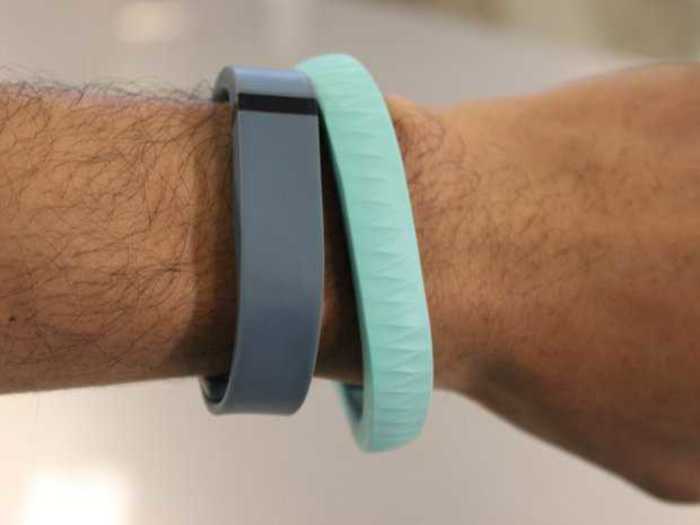
"These virtually invisible devices include earbuds that monitor heart rate, sensors worn under clothes to track posture, a temporary tattoo that tracks health vitals and haptic shoe soles that communicate GPS directions through vibration alerts felt by the feet.
"The applications are many and varied: haptic shoes are currently proposed for helping blind people navigate, while Google Glass has already been worn by oncologists to assist in surgery via medical records and other visual information accessed by voice commands."
Source: WEF

"Emissions from the world’s rapidly-growing fleet of vehicles are an environmental concern, and raising the operating efficiency of transport is a promising way to reduce its overall impact.
"New techniques to nanostructure carbon fibers for novel composites are showing the potential in vehicle manufacture to reduce the weight of cars by 10% or more. Lighter cars need less fuel to operate, increasing the efficiency of moving people and goods and reducing greenhouse gas emissions."
Source: WEF

As freshwater continues to dwindle, desalinating seawater has emerged as an option. "Desalination has serious drawbacks, however. In addition to high energy use, the process produces a reject-concentrated brine, which can have a serious impact on marine life when returned to the sea.
"Perhaps the most promising approach to solving this problem is to see the brine from desalination not as waste, but as a resource to be harvested for valuable materials. These include lithium, magnesium and uranium, as well as the more common sodium, calcium and potassium elements."
Source: WEF

"There are signs that a range of new technologies is getting closer to cracking [challenges]. Some, such as flow batteries may, in the future, be able to store liquid chemical energy in large quantities analogous to the storage of coal and gas.
"Various solid battery options are also competing to store electricity in sufficiently energy-dense and cheaply available materials. Newly invented graphene supercapacitors offer the possibility of extremely rapid charging and discharging over many tens of thousands of cycles. Other options use kinetic potential energy such as large flywheels or the underground storage of compressed air."
Source: WEF

"Able to fully charge more quickly, and produce 30%-40% more electricity than today’s lithium-ion batteries, this next generation of batteries could help transform the electric car market and allow the storage of solar electricity at the household scale. Initially, silicon-anode batteries are expected to begin to ship in smartphones within the next two years."
Source: WEF

"This field saw rapid progress in 2013 and appears set for imminent breakthroughs of scalable deployment of screenless display. Various companies have made significant breakthroughs in the field, including virtual reality headsets, bionic contact lenses, the development of mobile phones for the elderly and partially blind people, and hologram-like videos without the need for moving parts or glasses."
Source: WEF

"Attention is being focused on the gut microbiome and its role in diseases ranging from infections to obesity, diabetes and inflammatory bowel disease.
"It is increasingly understood that antibiotic treatments that destroy gut flora can result in complications such as Clostridium difficile infections, which can in rare cases lead to life-threatening complications. On the other hand, a new generation of therapeutics comprising a subset of microbes found in healthy gut are under clinical development with a view to improving medical treatments."
Source: WEF

Developments in basic Ribonucleic acid (RNA) science, synthesis technology, and in vivo delivery i.e. in a living organism, "are combining to enable a new generation of RNA-based drugs that can attenuate the abundance of natural proteins, or allow for the in vivo production of optimized, therapeutic proteins. Working in collaboration with large pharmaceutical companies and academia, several private companies that aim to offer RNA-based treatments have been launched."
Source: WEF

"Smartphones contain a rich record of people’s activities, including who they know (contact lists, social networking apps), who they talk to (call logs, text logs, e-mails), where they go (GPS, Wi-Fi, and geo-tagged photos) and what they do (apps we use, accelerometer data).
"Using this data, and specialized machine-learning algorithms, detailed and predictive models about people and their behaviors can be built to help with urban planning, personalized medicine, sustainability and medical diagnosis."
Source: WEF

"The ability to control a computer using only the power of the mind is closer than one might think. Brain-computer interfaces, where computers can read and interpret signals directly from the brain, have already achieved clinical success in allowing quadriplegics, those suffering 'locked-in syndrome' or people who have had a stroke to move their own wheelchairs or even drink coffee from a cup by controlling the action of a robotic arm with their brain waves. In addition, direct brain implants have helped restore partial vision to people who have lost their sight."
Source: WEF

 I spent $2,000 for 7 nights in a 179-square-foot room on one of the world's largest cruise ships. Take a look inside my cabin.
I spent $2,000 for 7 nights in a 179-square-foot room on one of the world's largest cruise ships. Take a look inside my cabin. Saudi Arabia wants China to help fund its struggling $500 billion Neom megaproject. Investors may not be too excited.
Saudi Arabia wants China to help fund its struggling $500 billion Neom megaproject. Investors may not be too excited. Colon cancer rates are rising in young people. If you have two symptoms you should get a colonoscopy, a GI oncologist says.
Colon cancer rates are rising in young people. If you have two symptoms you should get a colonoscopy, a GI oncologist says. 2024 LS polls pegged as costliest ever, expenditure may touch ₹1.35 lakh crore: Expert
2024 LS polls pegged as costliest ever, expenditure may touch ₹1.35 lakh crore: Expert
 10 Best things to do in India for tourists
10 Best things to do in India for tourists
 19,000 school job losers likely to be eligible recruits: Bengal SSC
19,000 school job losers likely to be eligible recruits: Bengal SSC

Copyright © 2024. Times Internet Limited. All rights reserved.For reprint rights. Times Syndication Service.